

The team and I have just returned from Ai4 Vegas, the most recent instance of the Ai4 conference series. My phone is full of new contacts, my notebook is packed with hastily scrawled insights, and my head is jammed with new ideas and opportunities as RapidCanvas pursues its vision of delivering outstanding ROI through our exclusive Agentic AI + Human Experts model.
Ai4, the largest AI industry event, felt different from the many AI events I've attended over the past few years. The conversations shifted from "what if" to "how fast," and the attendees represented a fundamental change in who's driving AI adoption. I'm convinced we are witnessing the true democratization of artificial intelligence happening in real time.
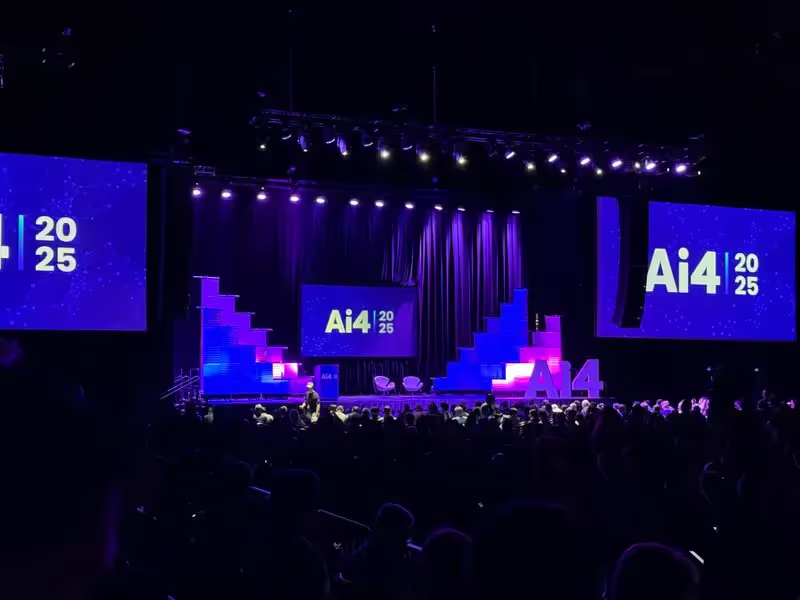
Here are some of the ideas and messages that underpinned this big revelation.
The most striking difference this year was who attended Ai4 Vegas. I expected the attendees to be dominated by tech roles - Product Managers, Data Scientists, Software Engineers Machine Learning Engineers. Instead I found myself in conversations with Business Leaders. 45% of the attendees we met were C-suite and another 15% were P&L owners or department heads e.g. SVP of Supply Chain & Operations, Senior Director of Marketing, Vice President of Finance. These weren't AI tourists collecting buzzwords for their next board meeting or AI tech enthusiasts trying to get their hands on the shiny new AI toys. They came with real business challenges, clear needs supported by real ROI, ambitious goals, and urgent timelines.
.avif)
Further, what I call the mid-market revolution caught many vendors completely off guard. The real opportunity isn't extracting maximum revenue from Fortune 50 or leading tech companies. It's enabling thousands of mid-market enterprises in verticals like retail, manufacturing, CPG, logistics, healthcare to punch above their weight class.
What makes this shift particularly compelling is the pragmatic approach these companies bring to AI adoption. Unlike Fortune 50 organizations that often get bogged down in lengthy evaluation cycles and complex procurement processes, mid-market companies are making decisions based on clear business metrics and immediate operational needs. They're asking pointed questions about implementation timelines, training requirements, and measurable outcomes rather than getting lost in theoretical discussions about AI's transformative potential.
This practical mindset is driving vendors to develop more accessible, plug-and-play yet bespoke solutions that deliver value quickly without requiring extensive technical expertise or massive IT infrastructure investments. The result is a virtuous cycle of innovation where simplified deployment models make AI more accessible, which in turn drives greater adoption and further innovation in ease-of-use.
Agentic AI dominated even more hallway conversations at Ai4 Vegas than Geoffrey Hinton's keynote. I noticed a crucial shift in how people discuss AI agents. Last year's presentations focused on theoretical capabilities and distant possibilities. This year, I found myself in back-to-back conversations where attendees shared specific use cases where AI agents operate independently in their businesses right now.
This represents a fundamental evolution from AI as a tool to AI as a teammate. The technology matured enough that companies trust agents to make meaningful decisions with or without constant human oversight. I saw this pattern across industries. Agentic AI is extending human capacity in ways that seemed impossible just months ago.
The implications go far beyond efficiency gains. Agentic AI enables smaller companies to operate with the sophistication of much larger organizations. Mid-sized companies can now maintain 24/7 customer service, dynamic pricing strategies, and proactive supply chain management. They compete on capabilities, not just on size.
What's particularly fascinating is how these AI agents are becoming more sophisticated in their decision-making capabilities. Rather than following simple rule-based logic, modern agents can evaluate complex scenarios, weigh multiple variables, and adapt their responses based on changing conditions. This evolution represents a quantum leap in automation sophistication that's making previously impossible tasks routine.
The trust factor cannot be overstated. Companies are moving from pilot programs where AI agents handle low-stakes tasks to production environments where agents make decisions that directly impact revenue, customer satisfaction, and operational efficiency. This shift requires not just technological maturity, but also organizational confidence in AI reliability.
The agentic AI plus human experts model creates a powerful synergy that amplifies the strengths of both artificial intelligence and human intelligence while mitigating their respective weaknesses. Agentic AI excels at processing vast amounts of data, maintaining consistency across thousands of decisions, and operating continuously without fatigue.
Meanwhile, human experts bring contextual understanding, emotional intelligence, creative problem-solving, and the ability to navigate complex ethical considerations that AI systems struggle with. When combined thoughtfully, this hybrid approach enables unprecedented scale and sophistication that neither artificial intelligence nor human intelligence could achieve independently.
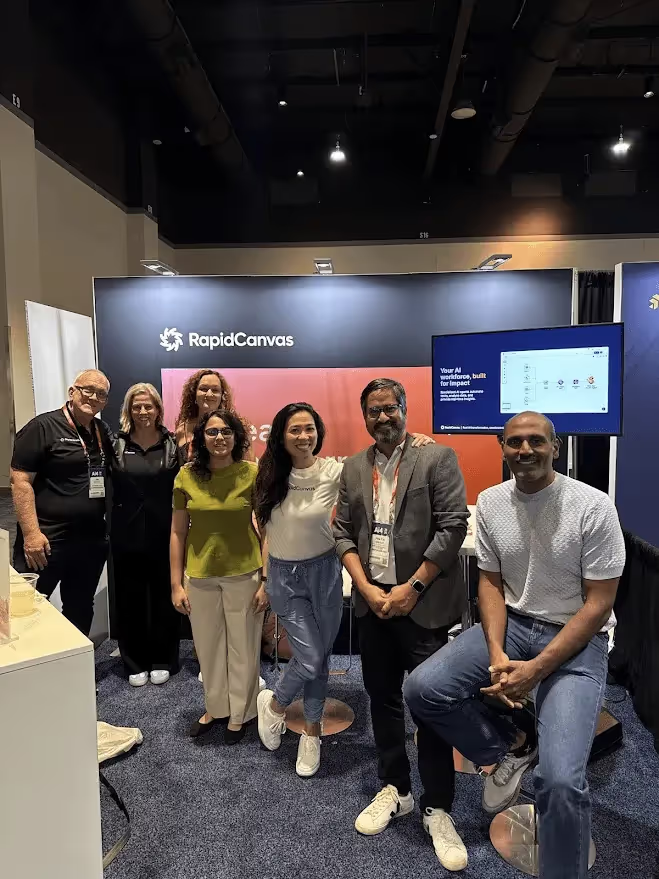
Perhaps most importantly, this model builds trust and adoption within organizations by preserving human agency in critical decision-making processes. Rather than replacing human expertise, agentic AI serves as an intelligent extension of human capabilities, handling routine tasks and data analysis while escalating complex or sensitive situations to human experts. This approach addresses the common fear that AI will eliminate jobs by instead transforming roles to be more strategic and fulfilling.
The most successful implementations I observed featured clear delineation of responsibilities between AI agents and human experts. Organizations that struggled with adoption often failed to establish these boundaries, leading to confusion about when humans should intervene and when they should trust AI recommendations. The winners created frameworks that leveraged AI for speed and consistency while preserving human judgment for nuance and creativity.
Conference attendees talked obsessively about time to value. I heard "quarterly ROI" mentioned in more than a dozen conversations. This shift reflects a practical reality: companies need AI wins fast to justify continued investment and build internal momentum for bigger initiatives.
This approach resonates because it reduces risk while proving value. CFOs approve AI budgets more readily when they see clear, near-term returns. Teams adopt AI tools more enthusiastically when they experience immediate benefits. Success breeds success, and fast success breeds faster adoption.
Speed to value also changes how companies evaluate AI vendors. Technical sophistication matters less than implementation velocity. Companies choose partners who can deliver working solutions quickly over those who promise perfect solutions eventually.
The emphasis on rapid deployment is reshaping the entire AI solutions landscape. RapidCanvas has been a pioneer in prioritizing pre-built integrations, standardized workflows, and automated setup processes over highly customizable but complex platforms. This shift benefits everyone: companies get results faster, vendors can scale more efficiently, and the overall market accelerates toward broader adoption.
What's particularly striking is how this focus on speed is changing internal project management approaches. Companies are launching AI initiatives with minimum viable products and expanding capabilities based on real-world performance and user feedback using agile, iterative approaches that deliver incremental value every few weeks.
The conference reinforced something I've suspected for months: agility can trump huge budgets in AI implementation. Large enterprises struggle with committee decision-making, legacy system integration, and change management bureaucracy. Midmarket companies move faster because they have fewer people saying no.
This agility extends to AI strategy. Companies beyond the Fortune 500 experiment more freely because the stakes feel manageable. They try new approaches, learn from failures, and iterate rapidly. Large enterprises plan extensively but often struggle to execute because perfection becomes the enemy of progress.
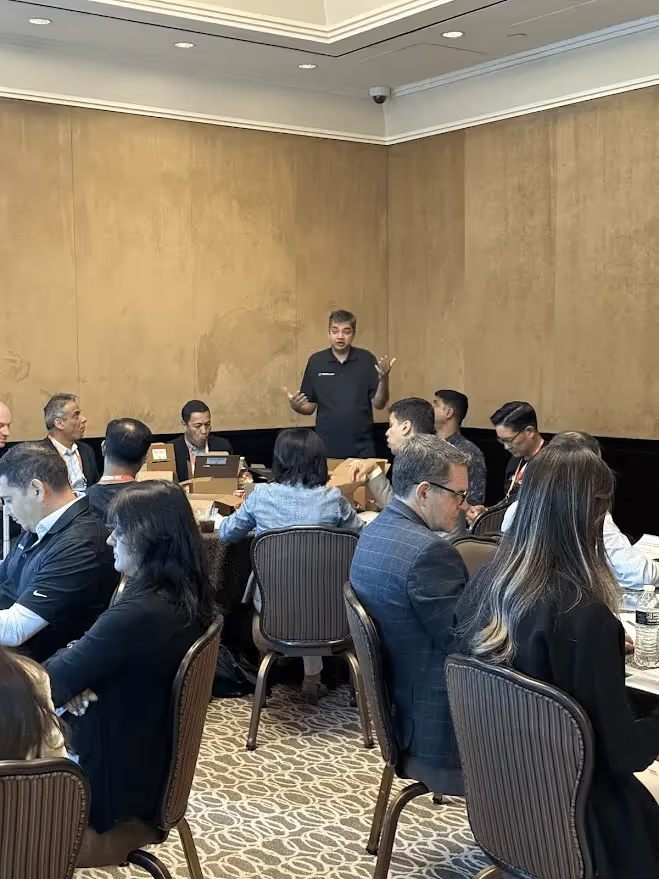
The nimble advantage multiplies when companies combine multiple AI capabilities. I heard about retailers implementing demand forecasting, dynamic pricing, and inventory optimization within months rather than years. Each system improved independently, but their combination created competitive advantages that larger competitors couldn't replicate quickly.
Small and medium businesses are also benefiting from what I call the "first-mover advantage in AI adoption." While large enterprises debate governance frameworks and conduct extensive risk assessments, nimble companies are gaining practical experience, building institutional knowledge, and establishing competitive moats through early implementation.
This dynamic is creating interesting market disruptions. Companies that historically competed on scale and resources now face competition from smaller players leveraging AI to operate with greater efficiency and sophistication. The playing field is being leveled in ways that favor operational excellence over organizational size.
Ai4 Vegas proved that artificial intelligence isn't a technology sector phenomenon anymore. I had substantive conversations about AI applications in multiple industries: specialized manufacturing, service industries with unique operational challenges, and niche sectors with highly specific requirements. In our work at RapidCanvas we are developing solutions for companies in an enormous range of industries.

Ai4 delivers a true microcosm of the global AI ecosystem. Companies are using AI to optimize operations based on complex variables like environmental conditions, resource allocation, and cost management. Service organizations leverage AI for scheduling, communication, and process optimization. Specialized manufacturers deploy AI for production optimization and safety monitoring.
Each industry brings unique challenges that general-purpose AI solutions can't address. The most successful implementations combine industry-specific knowledge with AI capabilities. This creates opportunities for specialized vendors who understand both the technology and the business context.
I also noticed that AI adoption patterns vary significantly across industries. Healthcare and financial services move cautiously due to regulation. Manufacturing and logistics embrace AI aggressively because ROI calculations are straightforward. Retail sits somewhere in between, balancing customer experience concerns with competitive pressure.
The industry-specific applications we develop are remarkably sophisticated, consistent with what each industry is seeking. Rather than applying generic AI tools to business problems, successful companies are developing highly specialized solutions that address the unique challenges, regulations, and success metrics of their particular sectors. This specialization is creating new categories of AI applications that didn't exist even six months ago.
What's particularly exciting is how AI is enabling innovation in traditional industries that haven't seen significant technological disruption in decades. These sectors are leapfrogging incremental improvements to implement cutting-edge capabilities that transform their entire operational model.
The insights from our two sponsored sessions perfectly exemplified the themes I observed throughout the conference. Our first session, "Mission: AI-mpossible – Transforming Production Scheduling with AI," demonstrated exactly what I mean about agile, iterative approaches. The case study presented by Ethan Hunt, Manager of Digital Transformation at Keysight Technologies, showed how manufacturers can scale output and improve quality without the massive infrastructure overhauls that traditional enterprise implementations require.
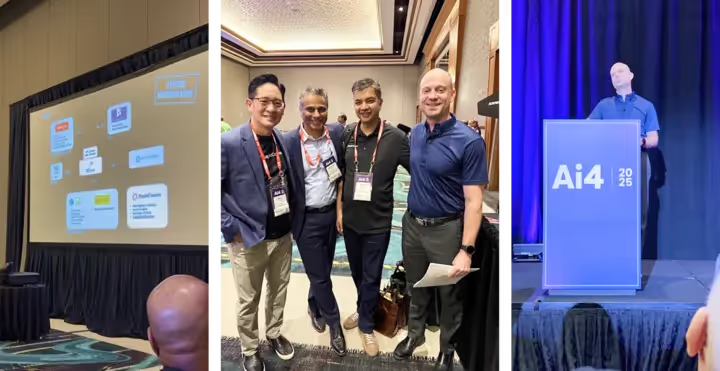
What resonated most with attendees was the practical approach: starting with existing systems, using AI-powered decisioning and automated data scrubbing, and delivering measurable results quickly. The session emphasized how supervisors literally "got their mornings back" – a perfect example of AI enhancing human productivity rather than replacing human expertise. This real-world impact story reinforced the conference theme that companies need quarterly ROI rather than theoretical future benefits.
Our second session, "Retail Rewired: Modular AI That Really Works," tackled the fragmented data problem that plagues so many midmarket retailers. My conversation with Santi Pierini (CEO of CJ) and Mayur Kshetramade (COO of RapidCanvas) highlighted how modular, plug-and-play AI solutions are enabling smaller retailers to compete with enterprise-level sophistication in demand forecasting, pricing optimization, and personalized marketing.
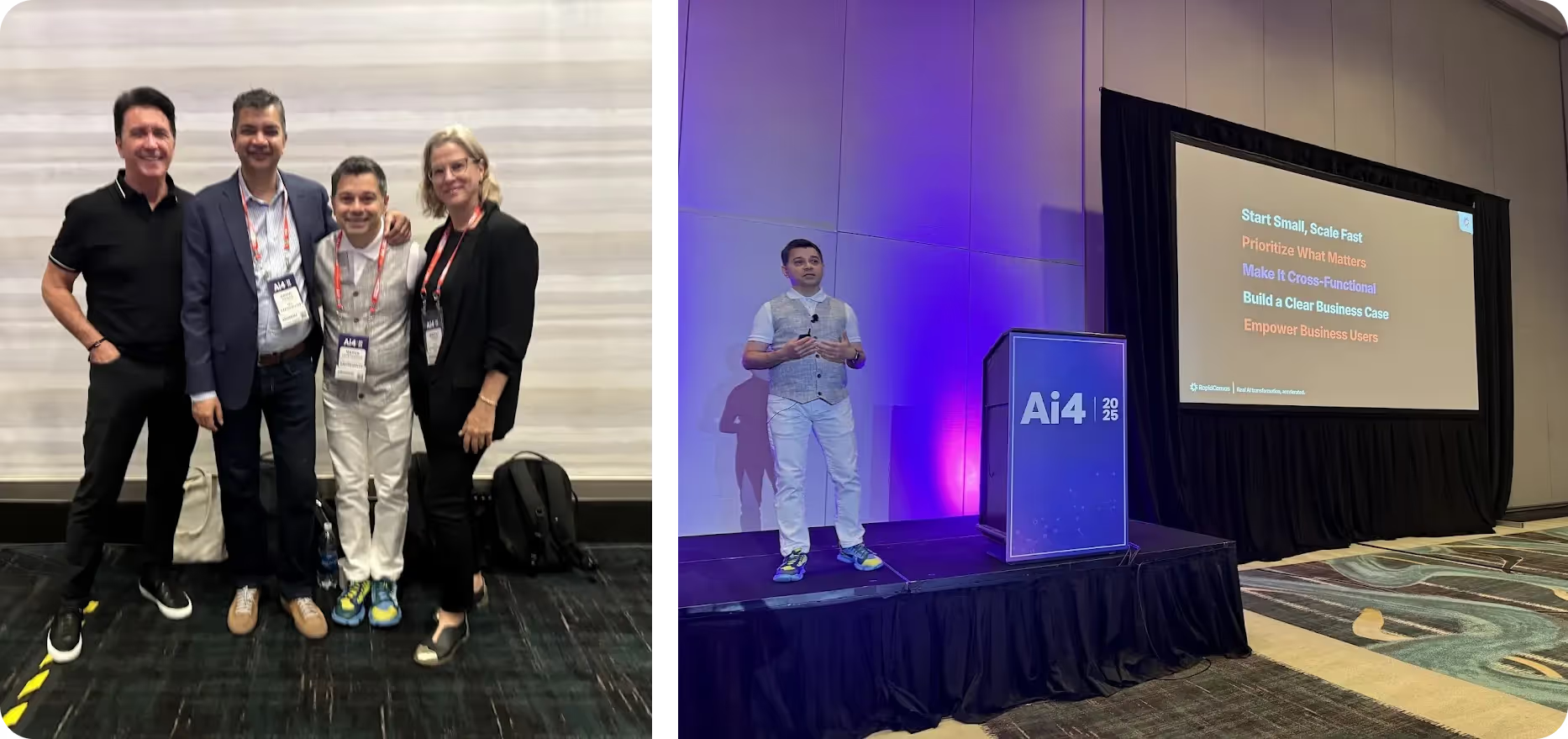
The session demonstrated the first-mover advantage in AI adoption I observed throughout the conference. Leading brands are reducing stockouts and boosting ROI without building in-house AI teams or waiting for perfect data infrastructure. This modular approach perfectly illustrates how nimble beats big – retailers can implement working solutions in weeks rather than waiting years for comprehensive system overhauls.
Our VIP dinner event brought together forward-thinking executives for deeper conversations about AI implementation strategy. The discussions reinforced three critical themes: the imperative for rapid time to value, the power of combining Agentic AI with human experts, and the realistic opportunity to drive 5X+ ROI within one or two quarters rather than years.
What struck me most about these intimate conversations was how experienced AI adopters emphasized starting small, proving value quickly, and scaling success rather than attempting comprehensive transformation initiatives. These leaders had moved well beyond theoretical discussions to focus on execution speed, measurement frameworks, and organizational change management.
The conference also highlighted the growing popularity of our AI Workshops solution – a 48-hour intensive program where AI and category experts work directly with client teams to identify and triage potential AI opportunities, then deliver a high-level implementation roadmap. This approach perfectly captures the implementation velocity trend I observed, where companies prefer rapid, expert-guided strategy development over lengthy internal planning cycles.
The AI Workshop model addresses a key challenge I heard repeatedly: companies know AI can help but struggle to prioritize opportunities or develop realistic implementation timelines. By combining industry-specific knowledge with AI capabilities in an intensive format, organizations can move from exploration to execution planning in just two days rather than months of internal debate.
One theme that emerged consistently was the evolving relationship between AI investment and returns. Early adopters who made significant AI investments 2-3 years ago are now seeing substantial returns, but they also learned expensive lessons about what works and what doesn't. This experience is informing a more sophisticated approach to AI investment decisions.
Companies are moving away from broad, unfocused AI initiatives toward targeted implementations with clear success metrics. Rather than trying to transform everything at once, successful organizations are identifying specific processes, workflows, or decision points where AI can deliver measurable improvements, then expanding from those successful implementations.
The conversation around AI budgets has also matured significantly. Instead of debating whether to invest in AI, companies are discussing how to allocate AI budgets across different initiatives, vendors, and implementation approaches. This shift indicates that AI investment has moved from experimental to operational for a significant portion of the market.
My head is still spinning from everything I absorbed these past three days. Ai4 Vegas marked an inflection point where AI moved from experimental to operational for midmarket companies. The conversations shifted from theoretical possibilities to practical implementations. Attendees discussed specific vendors, measurable results, and realistic timelines.
The winners won't necessarily be the companies with the biggest AI budgets or the most sophisticated technical teams. They'll be the organizations that combine human expertise with AI capabilities most effectively, implement solutions most quickly, and adapt most readily to changing conditions.
The AI revolution isn't coming. It's here, and it's accessible to companies of every size in every industry. The question isn't whether your organization will use AI. The question is how quickly you'll start and how effectively you'll execute.
Looking ahead, I see several trends accelerating: the continued democratization of AI tools, increased focus on industry-specific solutions, and the evolution of human-AI collaboration models. Companies that start their AI journey now with the right strategy and partnerships will have significant advantages over those who wait for perfect solutions or ideal market conditions.
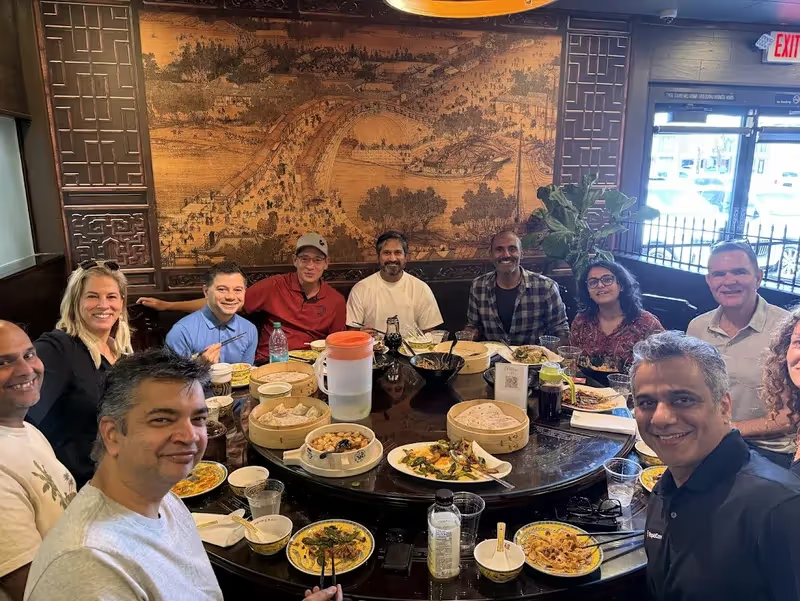
The insights from Ai4 Vegas make one thing crystal clear: the time for AI adoption is now. Whether you're just beginning to explore AI possibilities or looking to accelerate existing initiatives, having the right strategy and expert guidance can make the difference between transformative success and costly false starts.
Contact RapidCanvas today to schedule an AI Strategy Workshop with our experts. These collaborative engagements help you identify high-impact opportunities, develop implementation roadmaps, and create the foundation for sustainable AI success in your organization.
Don't let your competitors gain the first-mover advantage. Let's discuss how AI can transform your business operations and drive measurable ROI in the next quarter.


